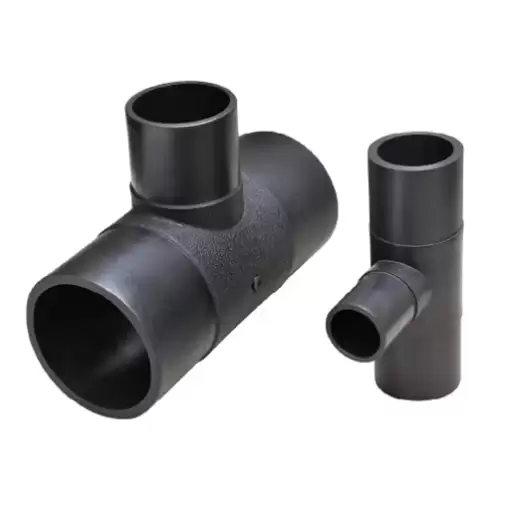Efficiency and dependability are critical in the field of piping systems. For instance, HDPE Butt Fusion Reducing Tee is a significant component that ensures efficient and reliable performance. It is a vital fitting because it allows for smooth connections between pipes of different diameters, and it is thus widely used in various construction and infrastructure projects. In this blog, we will discuss the basics behind HDPE (High-Density Polyethylene) materials, the advantages of butt fusion joining techniques, and specific applications of reducing tees to piping networks. This article aims to provide an in-depth understanding of how these fittings enhance pipe systems’ overall performance and life span. This guide, therefore, seeks to empower you with knowledge as well as give you insights into being practical when it comes to using HDPE Butt Fusion Reducing Tees, whether you are a seasoned pro or a newbie in this field.
What is a Butt Fusion Reducing Tee?
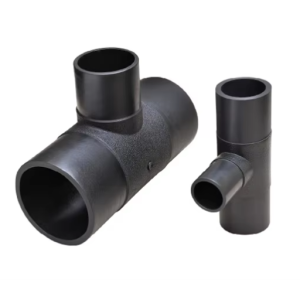
Image source: https://www.alibaba.com/
A Butt Fusion Reducing Tee is simply a type of pipe fitting that connects three lengths, two having the same diameter while one has a smaller diameter. The main aim of such a device is to ease transitions and junctions within pipelines, facilitating reasonable flow control and distribution. During the butt fusion joining process, the ends of the pipes plus the fitting are heated to specific temperature levels before being pressed together, resulting in a strong connection free from leakage points. This technique is mainly beneficial when applied in HDPE systems due to its capability to reinforce joint integrity, making reducing tee applicable in numerous sectors like water supply, sewerage lines, and industries.
Definition and Key Characteristics of a Reducing Tee
Reducing Tee is a type of pipe fitting used to connect three pipes, two of them of the same size and one smaller than the rest. It primarily ensures the fluid flow from a wider pipe is made to fit only through a narrower pipe without turbulence. Its main features are that it is pressure-sustaining, has high durability due to butt fusion, and it can work with different types of pipes, mainly those made from HDPE. These fittings are also rigid enough to be used in high-pressure applications involving corrosive fluids, such as water supply systems, sewage disposal systems, and industrial piping systems. Furthermore, reducing tees often adhere to specific industry standards, which ensure their reliability and performance across various projects.
Comparison with Other Pipe Fittings
Compared with other types of fittings like elbows or couplings, several key differences and advantages exist. Elbows alter the direction of water flows, while couplings bind similar pipes together, unlike reducing tees that reduce their sizes. What sets this kind of tee apart is its ability to facilitate the change between different diameters in pipes with minimal loss of pressure to keep up constant fluid speed. Contrary to standard tees that link three tubes with the same diameter, reducing tees have more flexibility when it comes to plumbing and laying out pipelines. In addition, they have been known to be much better than some mechanical joints due to their strength from being buttfused, making them suitable for use under high pressure and corrosion conditions. These decreasing T’s provide multi-purpose solutions within intricate piping configurations where transitory areas and interconnections are needed.
Applications in HDPE Butt Fusion
HDPE butt fusion is extensively employed in various applications due to its efficacy and strength in producing sturdy, watertight connections. One of the primary uses is water distribution systems, where HDPE piping ensures that potable water supplies are maintained by resisting corrosion and chemicals. Additionally, it is widely used in underground gas and oil piping systems that need leak-free connections to avoid environmental risks. Moreover, HDPE butt fusion has a role to play in wastewater treatment systems as it links different plants while maintaining the structure resistant to harsh chemicals and providing durability under pressure. Also, its versatility makes it an ideal choice for use in agriculture, as it offers reliable irrigation systems that can withstand harsh outdoor conditions. In general, butt fusion technology optimizes the dependability and longevity of HDPE pipe systems utilized across multiple industries.
How Does a Butt Fusion Reducing Tee Work?
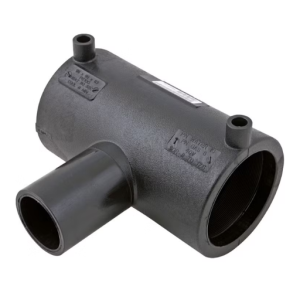
A butt fusion reducing tee functions by merging three sections of HDPE pipe whereby two ends share the same diameter while the third end is more minor, thereby ensuring smooth flow passage for a fluid transition from one section to another. This process starts by cutting the pipe ends so they become leveled, then heating them through a fusing machine using an appropriate temperature range. On attainment of the suitable temperature level, heat surfaces are pressed together, thus melting on both pipes, leading to combined joining points between them, more specifically referred to as the jointing process or stage. As soon as this step is over, a strong connection that’s equal to or even stronger than existing pipes emerges, preventing leakage and making such tubes usable for many purposes like plumbing, among others.
Principles of Butt Fusion
Butt fusion is a method of thermoplastic welding where heat and pressure create strong joints in HDPE piping systems. The following are some of the key steps involved:
- Preparation: Cut the ends of pipes to be joined to a uniform flat surface to ensure correct alignment, which is necessary for strong bonds.
- Heating: After being fabricated, the pipe ends are heated by a fusion machine to certain specified temperatures within the range 400°F—500°F (204°C —260°C), depending on their material.
- Joining: As soon as the proper temperature has been reached, the molten surfaces are pressed onto each other under appropriate force. This allows the cooling of molten surfaces, which forms robust and seamless joints.
- Cooling: Fusion is done to allow cooling while still under pressure until it finally sets, making sure that it can withstand forces from inside and outside when installed.
Generally, butt fusion remains efficient, dependable and makes durable joints free from leaks which are needed in diverse applications such as municipal water systems or industrial operations.
Steps Involved in Fabrication
Through butt fusion fabrication processes of HDPE pipe systems, several necessary steps should be taken for them to be successfully joined together.
- Material Selection: Choose quality HDPE materials that meet the applicable standards for your intended application. Consider size, pressure rating, and environmental conditions.
- Cutting and Preparation: Lengths of HDPE pipes are cut according to preference, whereas their ends may need planning or cutting off to produce even surfaces suitable for optimum contact during welding.
- Alignment: Proper positioning of pipe endpoints becomes vital at this stage. Before the fusion process begins, tools known as aligners or clamps can be used to hold pipes correctly accordingly, then start fusing them when all is set up correctly.
- Heating: Both ends of pipes can be heated to the fusion temperature explained before using either a heating element or a fusion machine.
- Joining: The hot ends are pushed together as they melt, causing them to join. This must be done accurately to avoid making wrong connections.
- Cooling and Inspection: Allow the assembly to cool while still under pressure. After it has cooled down, it should be examined for defects to ensure that any joint remains unbroken just prior to being placed into its final position.
When diligently followed, these steps provide durable links that enhance the HDPE pipeline’s functionality and lifespan across various industries.
Importance of HDPE Pipe Fittings
The HDPE pipe fittings are essential for any kind of piping system because they ensure effective and efficient fluid movement within various applications. The role of these fittings is vital in keeping the integrity of a system by providing robust connections that can withstand pressure and environmental conditions. HDPE materials make these fittings more valuable in several industries, such as water supply, wastewater management, and agricultural irrigation, where there is a need to be flexible and resistant to corrosion. Additionally, these fittings promote sustainability efforts due to their recyclability and encourage more extended service lives for systems, reducing the costs associated with regular replacement. Their installation and maintenance ease further enhance their significance in building robust infrastructure systems.
What are the Benefits of Using a Butt Fusion Reducing Tee?
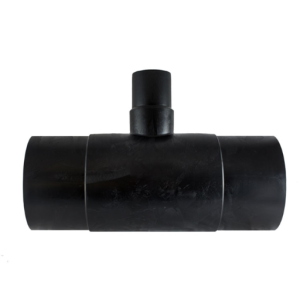
Butt fusion-reducing tees have several advantages when used on HDPE pipes. One such benefit is that they offer smooth transitions between different diameters of pipes, thereby ensuring optimum flows while minimizing turbulence. Their seamless construction eliminates leaking points, which enhances the overall system integrity. Moreover, these additives can withstand high-stress levels and harsh environments, thus prolonging the lifecycle of the installation. Also, the butt fusion technique simplifies its assembly process through an easy installation, thereby lowering labor charges and time spent during it. Lastly, being made from various HDPE materials ensures this type of tee can be applied versatilely, responding to demands from different sectors.
Advantages Of Socket Fusion
However, HDPE piping systems offer a better alternative to socket fusion. This is because butt fusion can be used in the creation of a continuous jointed system, which improves structural integrity and reduces the risks associated with leakage. Directly fusing pipe ends eliminates the need for fittings that could impede flow and create weak points. Besides, butt fusion typically exhibits higher pressure ratings than socket fusion does hence is preferable for high-demand applications. In addition, the use of butt fusion allows for flexibility in pipe sizes connected, resulting in a more efficient design that reduces material use and installation time. Generally speaking, these elements necessitate industrial applicability and cost efficiency.
Efficiency in Reducing Diameter
Among the optimization issues that should be considered in HDPE piping systems is down-sizing pipe diameter, which aims to attain maximum flow capacity and maintain system efficiency. The usual procedure involves the application of reducers that link pipes with different diameters without causing turbulence, especially at transition points. If properly made, well-designed reducing fittings will provide a smooth transition, thereby improving hydraulic performance. Also, proper diameter reduction can result in substantial material savings and lower installation costs attributed to flexibility during system construction stages. Many other studies have vindicated this position by showing that when correctly done, such alterations do not affect pressure ratings, thus making them always applicable under actual service conditions. By carefully shrinking diameters, one enhances the life expectancy of a piping network and contributes towards sustainable utilization rates in various industries and overall resource management practices.
Durability and Corrosion Resistance of Polyethylene
Polyethylene is popular because it can withstand a lot of wear and tear. This makes it preferable in many industrial uses. A molecular solid structure protects against various chemicals like acids, bases, and salts that harm other materials often used for these purposes. Polyethylene is not prone to rusting or corroding like metal pipes, thus guaranteeing long-term service even under severe conditions. Furthermore, this durability stems from its ability to endure extreme temperatures; at lower temperatures, it remains flexible but stable at higher ones, ensuring consistency during operation across different conditions. In conclusion, these characteristics lengthen the lifespan of polyethylene pipe systems and lower maintenance costs, thereby creating more value over time.
What Standards and Specifications Are Applicable?
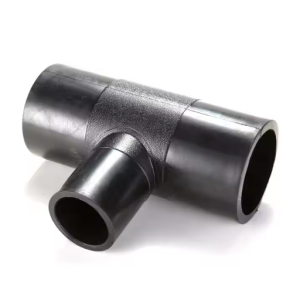
For instance, in polyethylene piping systems, design, manufacture, and installation are guided by numerous essential standards and specifications. The ASTM provides instructions about relevant standards, such as those on polyethylene tubes given by ASTM D3035. Besides that, AWWA C901 and C906 are guidelines specifically addressing plastic pressure pipe issues provided by the American Water Works Association (AWWA). Consequently, international standards such as ISO 4427, created by the International Organization for Standardization (ISO), have become very significant in the assurance of quality and safety in polyethylene applications. Adhering to these regulations while designing pipes will ensure their performance and credibility among people who need them in the industry.
Understanding SDR11 and SDR17
SDR is an abbreviation for Standard Dimension Ratio, and it is the primary scale used to describe pipe dimensions like those made from high-density polyethylene. The SDR number is calculated by dividing the pipe’s outside diameter (OD) by its wall thickness. For instance, SDR11 means that OD is 11 times the wall thickness, whereas SDR17 refers to a ratio of 17. Consequently, SDR11 pipes are more robust and built to withstand higher pressure than SDR17 ones, which are thinner and suitable for applications where lower weights may be accepted readily. Correct selection of the type of SDR plays a significant role in ensuring that a piping system accomplishes enough pressure or flow rates required. In contrast, ensuring materials use efficiency and low cost.
Compliance with PN16 Pressure Ratings
PN stands for Pressure Nominal, a term given to indicate the nominal pressure rating of a pipe, ensuring proper operation and safety of pipeline systems. PN16 ratings mean that these pipes can approximately handle pressures up to 232 psi or 16 bar. This pressure rating is essential when determining applications or environments where such types can be installed without any chance of failure. For instance, manufacturers and users must also consider the PN16 rating during the design or selection of piping systems, as this will ensure system integrity and compliance with relevant standards. Consequently, proper installation techniques and regular servicing remain essential factors contributing to the long-term reliability of such PN16-certified systems, thereby preventing leakage and possible damages under high-pressure situations. Checking with industrial standards and guides always helps confirm if such chosen materials effectively fulfill these described pressure specifications.
Regulatory Requirements for Polyethylene Pipe
Various regulatory standards governing polyethylene (PE) pipes must be observed when selecting and installing them. PE pipe materials are guided by guidelines provided by the American National Standards Institute (ANSI) and the American Society for Testing and Materials (ASTM), which specify performance, safety, health, and environment-related aspects. These are supplemented by Environmental Protection Agency (EPA) regulations, which regulate their use in potable water systems to meet health and safety standards. Additionally, local and state laws could necessitate certification and testing to ensure PE pipes are suitable for specific uses. To comply correctly, one should refer to relevant codebooks, governmental papers, and due diligence studies about neighboring laws that may impact the application or installation of PE pipes.
Reference sources
-
Butt Fusion Reducer Tees – HDPE Supply
This source provides detailed information on various sizes and specifications of molded butt fusion reducer tees, suitable for multiple applications.
Read more -
HDPE Butt Fusion Reducing Tee – SUNPLAST
This page offers information on HDPE butt fusion-reducing tees used to join HDPE pipes, available in various sizes and pressure ratings.
Read more -
HDPE Butt Fusion Reducing Tee – SUNPLAST
This source provides specifications for injection-molded HDPE butt fusion-reducing tees, highlighting their quality and warranty.
Read more
Related Articles: Butt Fusion Reducing Tee Technical Specifications



